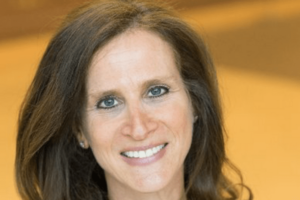 Today, our healthcare system is making a drastic change from providing care as a service for the sick, to empowering and engaging people as partners and owners of their health and well-being. Take last month’s Apple news as an example. A device that was originally created for a seamless consumer technology experience now allows users to take an electrocardiogram, or ECG, and share it with their doctor, all from their Apple watch.
Today, our healthcare system is making a drastic change from providing care as a service for the sick, to empowering and engaging people as partners and owners of their health and well-being. Take last month’s Apple news as an example. A device that was originally created for a seamless consumer technology experience now allows users to take an electrocardiogram, or ECG, and share it with their doctor, all from their Apple watch.
This announcement got me thinking about the need for this type of simple consumer experience across all patient and provider engagement – from specialist to insurer to billing team. In an age of increasing consumer responsibility for healthcare costs, healthcare executives must prioritize a smart, personalized approach to engaging and educating patients so that they have the tools and real-time information they need to be informed healthcare consumers.
The healthcare experience for consumers has been anything but premium to date. Seemingly simple endeavors – like making an appointment or paying a healthcare bill – have been steeped in unnecessary complexity. In fact, even today, more than 40 percent* of healthcare executives report that they send paper-based healthcare bills. In a world where consumers are used to the ease of use of OpenTable to make a reservation and a few swipes to pay their mobile phone bill each month, paper-based billing seems prehistoric and inefficient.
So why is it that more than 60 percent* of healthcare executives recognize that patient satisfaction specific to billing and payments is moderate or worse, yet have done little to address it? There are a host of reasons – from time-consuming day-to-day adjustments to meet value-based care requirements to the overarching reality that until now, healthcare systems and employees haven’t really had to prioritize consumer experience. If healthcare executives want consumers to pick them as provider of choice, they need to prioritize the experience beyond the clinical visit. The best places to focus are the first and last touch point, as each holds a long-standing impression with the consumer.
Most often, the first touch point for consumers and the healthcare system is planning for an appointment – whether it be addressing symptoms associated with a chronic condition or an annual check-up. To optimize the experience for patients, providers need to consider what happens before the patient even walks in the door. From sending appointment reminders to providing educational materials and cost estimates prior to the visit, there is much value derived in helping patients come to their appointment informed from both a clinical and financial standpoint. While this patient-first approach sounds simple, it is driven by complex technologies that combine data science, targeted segmentation and machine learning to enable a truly personalized approach for every patient.
The tail end of the consumer experience in healthcare today – actually paying the bill for the care provided – is another area ripe for experience and transparency improvements. Today, innovative healthcare organizations such as Westmed Medical Group are adopting technology that allows them to develop a complete picture of consumer preference, including preferred mode of bill payment (e.g., cell phone, desktop, mail), best time to reach out and if/when a payment plan may be necessary. By leveraging personalized consumer touch-points, Westmed creates tailored engagement that drives desired consumer actions. This means bill payments are expedited and they see more revenue in real-time. A win-win for both the consumer and the healthcare provider.
At the core of value-based care is the idea that we want to keep people healthy with a holistic, empowered approach that engages them as a central figure in their care plan. By emulating the approach that Apple and other big tech companies have established around consumer engagement, we can better provide patients with an experience that caters to their personal preferences and needs as a consumer.

















